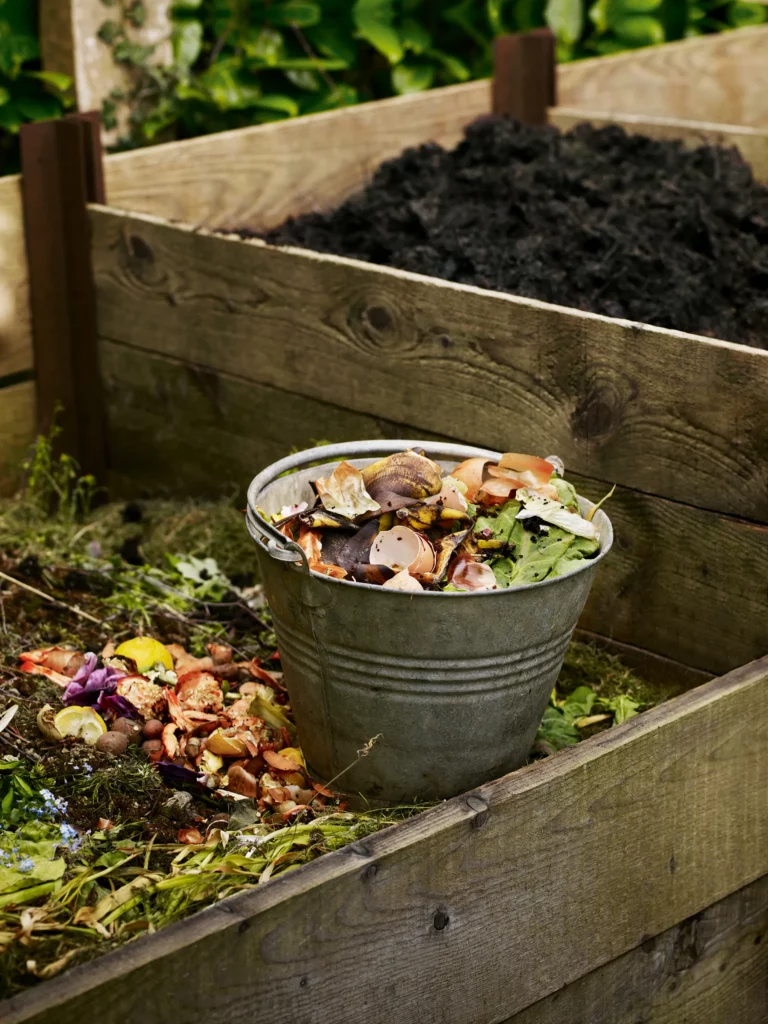Bacteria-heavy composts
Composts with a low C:N ratio, i.e., increased nitrogen content, are usually bacteria-heavy, while fungus-heavy composts use feedstocks with an increased C:N ratio, i.e., low nitrogen content.
In most cases, bacteria dominate in purchased composts. This is partly due to the fact that purchased composts are mature. In addition, the compost is frequently turned and worked during the composting process, so that fungal hyphae are often disturbed in their development.
However, the C:N ratio is fundamental here as well.
Making bacteria-heavy compost yourself
If there is enough space and time, it is recommended to make your own bacteria-heavy compost. The following composition will make a bacteria-heavy compost:
25% material with high nitrogen content (e.g. legumes, manure).
45% green waste (e.g. lawn clippings, coffee grounds)
30% Woody material (e.g. hay, straw, dried leaves).
Once the compost pile is assembled, it should heat up to 55-60°C within 24-72 hours.
If it does not, either too little nitrogenous material has been added or the decomposing organisms have been killed by pesticide residues contained in the source materials. If there is too little nitrogen, simply add more nitrogen-containing material. If there are pesticide residues in the source material, it is possible to encourage pesticide-degrading bacteria by adding molasses or other sugar (mixed with water, 1% molasses/sugar) to the compost pile. If these bacteria have also already been killed there is still the option of adding commercially available bacterial preparations to the compost pile.
When the compost pile has reached a temperature of 70°C, it should be turned to avoid killing the beneficial organisms due to excessive heat.
After turning three to four times, the directly available nutrients should be depleted and the protozoa will multiply more. The temperature should drop below 60°C. At 45°C, nematodes begin to spread.
When the compost pile has cooled down to the ambient temperature it is a sign that the compost is now ripe. If the compost is turned again at this time and heats up again, the compost is not yet mature.
In the following 6 months (approx.), the microbial diversity continues to increase. After that, the mature compost loses its microbial diversity again over time. After about 2 years, there is little difference from the topsoil (in terms of microbial life).


